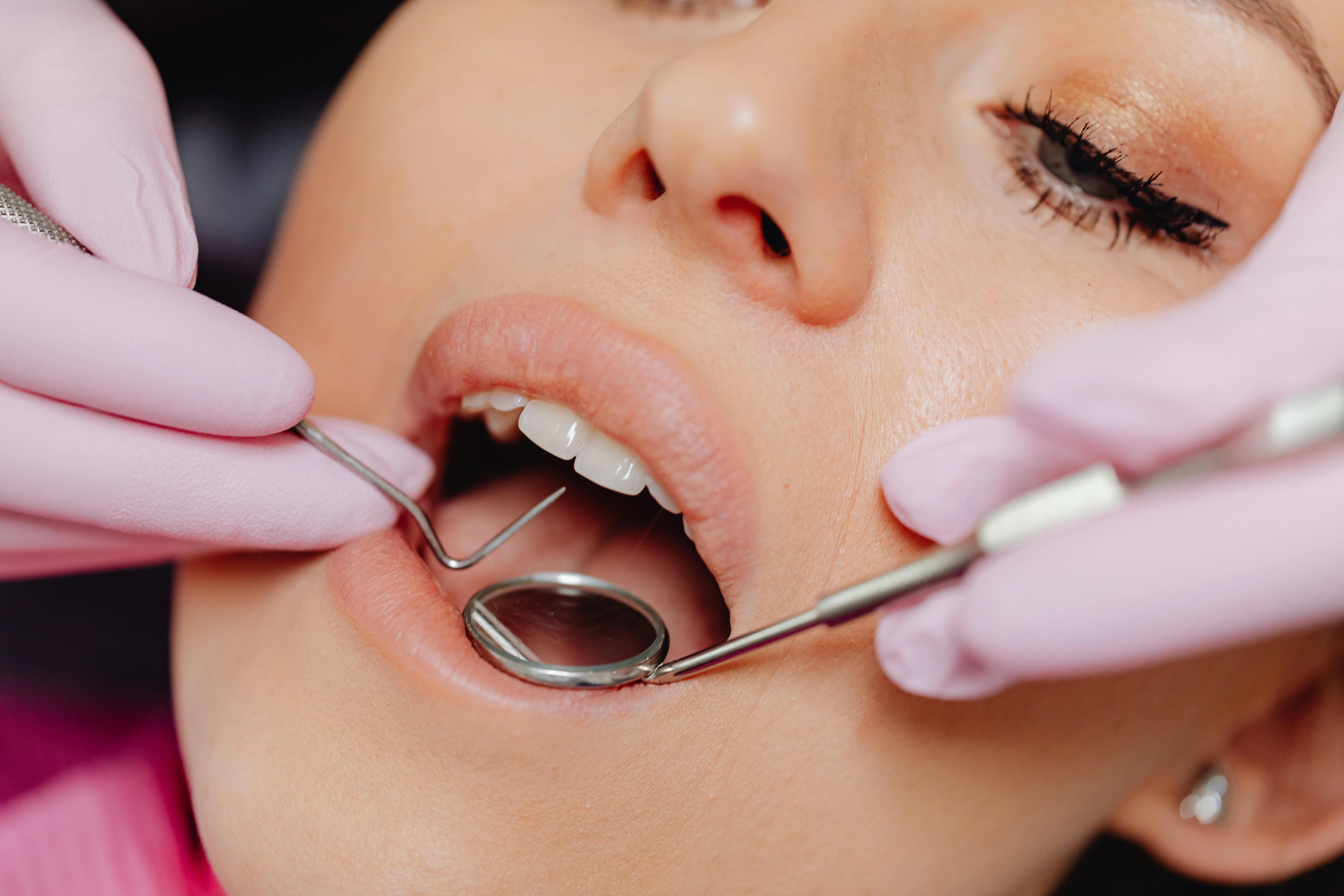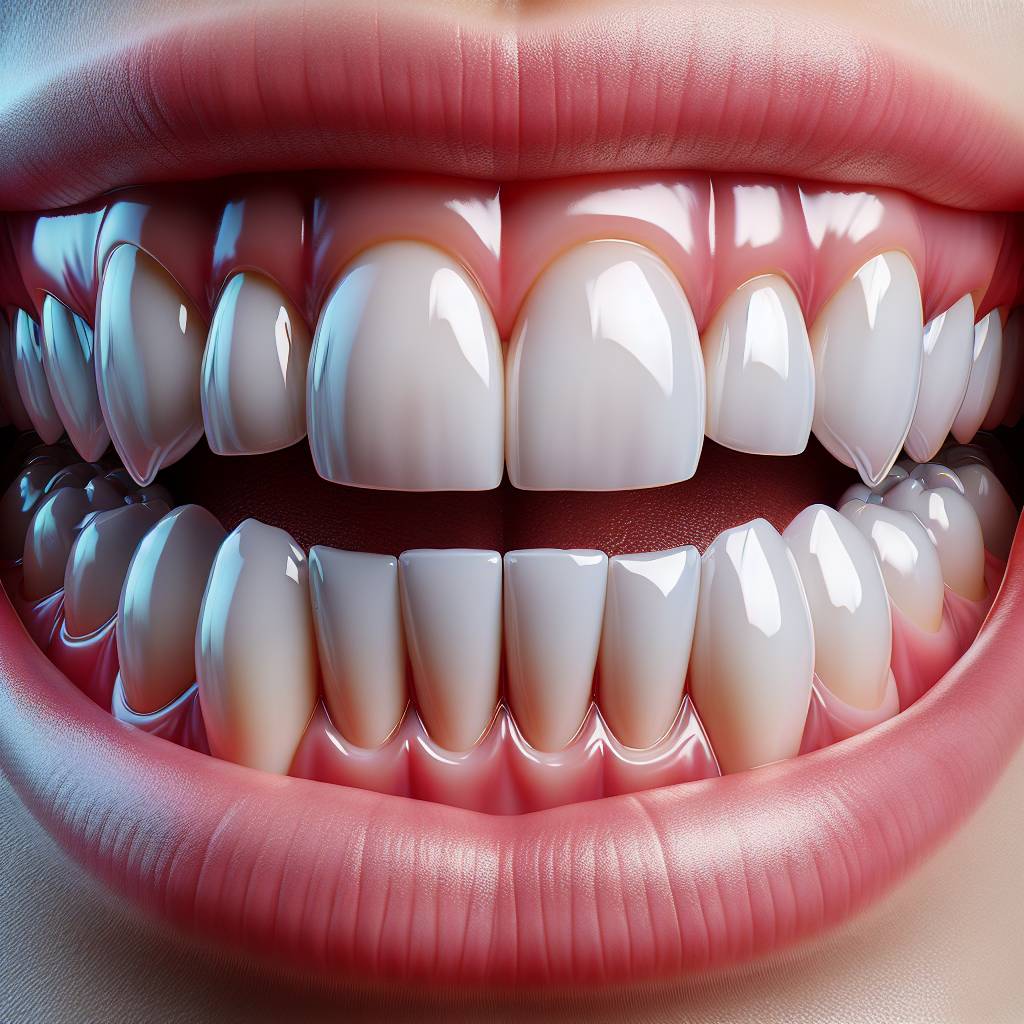Crowns, also known as caps, are a popular cosmetic dentistry procedure used to restore the look of front teeth. They are typically used to restore the shape and size of a tooth that has been damaged or decayed, or to improve the overall aesthetics of a smile. Crowns can be made from a variety of materials, including porcelain, ceramic, metal alloys, and composite resin. They are custom-crafted to fit the shape and size of the individual’s tooth and can be matched to their natural tooth color for an aesthetically pleasing result. With proper care and maintenance, crowns on front teeth can last for many years. In this article, we will discuss how crowns look on front teeth and what you need to know before having them placed.Crowns on front teeth can vary in shape and size depending on the individual tooth. Generally, they look like a tooth-shaped cap that is placed over the top of an existing tooth. The color and material of the crown may be matched to the patient’s other teeth, or it may be made from a different material such as ceramic or porcelain. Crowns are typically secured in place with a strong adhesive to ensure that they remain secure.
Advantages of Front Tooth Crowns
Front tooth crowns offer many advantages to people with dental issues. First, they can effectively restore the shape and appearance of the affected tooth. Crowns can also be used to strengthen a tooth that has been weakened due to injury or decay. They can also be used to cover an unsightly discoloration or chips in a front tooth. Perhaps most importantly, crowns can protect a damaged tooth from further damage or decay.
Disadvantages of Front Tooth Crowns
While front tooth crowns offer many advantages, they do come with some potential drawbacks as well. One of the main disadvantages is cost—front crowns are typically more expensive than other types of dental treatments. In addition, crowns require multiple visits to the dentist and often require anesthesia for placement, which can add to the cost and inconvenience of getting them. Finally, front crowns typically need to be replaced every five to 10 years; so patients may need to undergo multiple procedures over a lifetime in order to keep their smile looking great.
Different Types of Front Tooth Crowns
Front tooth crowns are an important part of a cosmetic dental treatment. A front tooth crown, also known as a cap, is used to cover the visible area of a tooth that has been damaged or decayed. They are made of either porcelain or metal and can be used to restore the shape, size, and look of a tooth. The type of crown used depends on several factors, including the condition of the affected tooth, budget, and desired aesthetic outcome. Here are the different types of front tooth crowns available:
Porcelain Crowns: Porcelain crowns are the most popular option for restoring front teeth. They closely match natural teeth in terms of color and texture and are durable enough to withstand everyday wear and tear. Porcelain crowns also resist staining from food and drink better than other types of dental restorations.
Metal Crowns: Metal crowns are another popular option for restoring front teeth. They provide excellent protection against damage due to their durability and strength. However, metal crowns do not look as natural as porcelain ones because they have a metallic hue that is more obvious when compared to natural teeth.
Composite Resin Crowns: Composite resin crowns offer a good balance between aesthetics and durability. They look much like natural teeth but may not be as strong as porcelain or metal crowns. Composite resin also tends to wear down over time due to its porous nature, so it may need to be replaced more often than other types of dental restorations.
Zirconia Crowns: Zirconia is an advanced material that is often used to create beautiful and durable dental restorations such as crowns for front teeth. Zirconia is strong enough to resist everyday wear and tear while still looking very natural when compared with real teeth. It is also resistant to staining from food and drinks better than other materials used for dental restorations.
The type of front tooth crown you choose will depend on your individual needs and situation. Your dentist can recommend the best option for you based on your specific requirements
Importance of a Front Tooth Crown Treatment
A Front Tooth Crown treatment is an important procedure for restoring the shape, size, strength and appearance of a tooth. It is usually done when a tooth is damaged due to a crack, chip or decay. A crown is placed over the damaged tooth to protect it from further damage. This procedure also helps to improve the overall appearance of your smile. It is important to make sure you are properly prepared for this type of treatment before it is performed.
Choosing Your Dentist
It is important to find a qualified and experienced dentist who specializes in front tooth crown treatments. Make sure you ask your dentist about their experience in performing this type of procedure and inquire about any references they may have. Additionally, make sure that the clinic you choose has the proper equipment and materials needed for this type of treatment.
Getting Ready for Your Appointment
Before your appointment, it is important to practice good oral hygiene habits such as brushing twice daily and flossing at least once daily. Additionally, make sure to avoid smoking or drinking alcohol in the days leading up to your procedure as these activities can interfere with healing after your crown placement. If you are taking any medications, make sure you inform your dentist so they can determine if any adjustments need to be made during the treatment.
What Happens During a Front Tooth Crown Treatment?
During a front tooth crown treatment, your dentist will first examine your mouth and take X-rays to determine the extent of damage to your tooth. Depending on the condition of your tooth, they may also need to perform additional treatments such as root canal therapy or gum surgery before placing a crown over it. Once these procedures are complete, they will place the crown over your affected tooth and use special dental cement or bonding material to attach it securely in place.
Caring for Your Crown After Treatment
It is important that you continue practicing proper oral hygiene habits after having a front tooth crown placed on one of your teeth. This includes brushing twice daily with fluoride-containing toothpaste and flossing at least once daily. Additionally, be sure to visit your dentist regularly for check-ups and cleanings so they can monitor the condition of both your natural teeth and crowns.
Caring for a Front Tooth Crown
Caring for a front tooth crown can be daunting, but it doesn’t have to be. With proper care and attention, your front tooth crown can last a lifetime. Here are some tips to help you keep your crown in tip-top shape:
The first step is to brush your teeth daily with a soft-bristled toothbrush and fluoride toothpaste. Brush your crown gently, making sure that you reach the gum line and the edges of the crown. Flossing is also essential; make sure to floss around the base of the crown, as well as any other areas where food may get trapped.
It’s also important to avoid putting excess pressure on the crown. Avoid biting down on hard objects such as ice or hard candy, and avoid using your teeth as tools (such as opening bottles or packages). If you grind your teeth at night, wearing a night guard can help protect your crown from damage.
Finally, it’s important to visit your dentist regularly for checkups and cleanings. Your dentist will be able to check for any signs of wear or damage to the crown, as well as check for any other dental issues that may arise. With regular care and attention, your front tooth crown will remain healthy and beautiful for years to come.

How Long Does a Front Tooth Crown Last?
A front tooth crown typically lasts between five and 15 years, though it can last longer with proper care. The longevity of a front tooth crown depends on the material used, the quality of the dental work, and how well the patient takes care of their teeth. Crowns made from porcelain-fused-to-metal (PFM) tend to last longer than those made from resin or all-porcelain materials.
The success of a front tooth crown also depends on how well the patient takes care of their teeth. Proper brushing and flossing techniques can help prolong the life of a dental crown. Additionally, patients should visit their dentist regularly for checkups and cleanings in order to keep their teeth and gums healthy. If any problems are detected during these visits, they should be addressed promptly in order to prevent further damage that could lead to the need for another crown.
In some cases, a front tooth crown may need to be replaced sooner than expected due to wear or damage. This could be caused by grinding or clenching teeth, chewing hard foods or objects, or any other type of trauma that affects the tooth or surrounding area. If this happens, it is important for patients to visit their dentist as soon as possible in order to address any problems and possibly replace the crown before more extensive damage is done.
Overall, with proper care and maintenance, a front tooth crown can last up to 15 years or longer before needing replacement. However, this timeline can vary drastically depending on individual circumstances such as material quality, daily habits, genetics, etc., so it is important for patients to talk with their dentist about what they can do to ensure that their dental work will last as long as possible.
Cost of Front Tooth Crowns
The cost of front tooth crowns can vary depending on the type of crown, the material used, and the dentist you choose. Porcelain crowns are one of the most popular types of front tooth crowns and can range in price from $800 to $1,500 per tooth. Gold crowns are more expensive and can cost up to $3,000 per tooth. Other factors that can affect the cost include where you live, how many teeth need to be crowned, and any additional treatments such as root canals or periodontal work that may be needed prior to placing a crown.
Your dentist will be able to provide you with an accurate estimate of your treatment costs after examining your affected teeth. In some cases, dental insurance may cover part of the cost for a front tooth crown; however, it is important to speak with your insurance provider beforehand to determine what is covered by your plan.
Pros of Getting a Front Tooth Crown
A front tooth crown is a restoration procedure used to strengthen a damaged tooth. When the outer layer of enamel has been worn away due to decay or injury, a crown can be used to protect the remaining tooth structure. One of the biggest advantages of getting a front tooth crown is that it can give you a more aesthetically pleasing smile. A crown can also improve your ability to chew food and speak clearly, as it helps to support the remaining tooth structure and prevents further damage. Additionally, it can help prevent bacteria from entering the interior of your tooth and causing further damage or infection.
Cons of Getting a Front Tooth Crown
One potential downside of getting a front tooth crown is that it may require multiple visits to your dentist before the procedure is complete. This is because the dentist will need to make sure that the crown fits properly and matches your other teeth in size and shape. Additionally, getting a front tooth crown can be expensive depending on the type of material you choose for the restoration. Finally, while dental crowns are highly durable, they may need to be replaced over time due to wear and tear or changes in your bite.

Conclusion
Crowns are an effective and attractive way to repair front teeth that have been damaged due to trauma, decay, or wear. Crowns can be used to restore aesthetics and strength in the front teeth, helping people feel more confident about their smiles. Although crowns may require more upkeep than other restorative treatments, they can last for many years with proper care.
The best way to determine if a crown is the right choice for your front tooth is to talk with a qualified dental professional. They can assess the condition of your tooth and help you decide if a crown is the best option for restoring it.
No matter what type of dental treatment you choose for your front teeth, taking care of them with regular brushing and flossing will help ensure that they stay healthy and strong for years to come.

